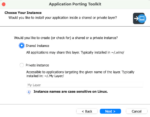It’s summer, a time where business slows as employees take well-deserved vacations and out-of-office messages circulate through corporate inboxes. As we sweat in the heat of summer, now is a great time for companies to ask the following question: Are we sweating our SharePoint asset?
As a term, sweating a corporate asset is a broad way of asking if it is maximizing its value within your organization. From a SharePoint perspective, is the reason you brought SharePoint into the business the same as its current use? If you deployed SharePoint to give your customers a centralized ordering system, have you deployed it to your customers, and are they using it?
Over the years, I have worked with many companies that have lost their direction once SharePoint is deployed. In these situations, stakeholders and users have shifted from business-unit focus as other areas went online with SharePoint functionality, something that leaves an obvious poor taste in the mouths of the business decision makers and users. This is where the importance of sweating the asset is critical. The question is, what can a business do to plan on sweating their SharePoint asset?
• Drive the business case through your entire organization – When writing the business case and selling it to your company, be sure to create tangible deliverables which intersect functionality with corporate roles and objectives for each business unit. This creates anticipation and excitement at the business unit level. As deliverables are implemented, be sure that each function is used to their maximum by each user.
• Communicate objectives and measure their success – During your kickoff meeting, make sure to establish a clear baseline that describes the objectives and planned successes of the implementation. At the halfway and completion marks of your project, review your successes and review your expectations. If your expectations have exceeded you initial baseline, you’re sweating!
• Establish survey tools to provide feedback to the project executives – Create a SharePoint site where users can go to complete competency and functionality surveys. Ask questions of your end users that measure their current and expected usage. Assuming that some expectations will be outside of your original scope, begin creating a sub-project for new functions and usage.
• Create dashboards – Dashboards that display usage and performance metrics are great tools to see how the business is truly utilizing SharePoint. We have seen huge success in click-by-click analysis to ensure that key functionality is being used throughout the organization. Once the metrics are created, review the data often and improve the functionality that may be lacking in a particular area or business unit.
• Ask the tough questions – Make the business users sweat by asking tough questions! Challenge users to suggest ways to improve their SharePoint experience. Hold roundtables or town-hall meetings to promote knowledge- and idea-sharing throughout the user community. The more users know, the more they will want to challenge the SharePoint deployment with bigger and better ideas.
Eric is the Founder and CEO of eMark Consulting, Ltd. www.theemarkgroup.com, a SharePoint strategy and systems integration firm based in Toronto. He has worked with many Fortune 500 companies on their business productivity architecture and deployment plans to ensure they maximize the benefits of Microsoft technologies and successfully deploy their SharePoint-based solutions. Eric is a frequent contributor to the SPTech Report; you can reach him by e-mail at eric@theemarkgroup.com.





